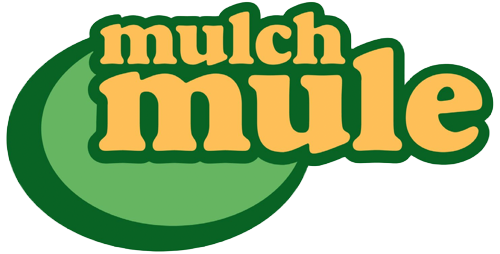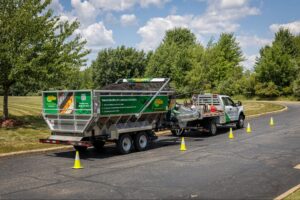Hiring employees in the landscaping industry has become increasingly challenging. Factors such as rising wages and a shrinking pool of skilled labor, along with intense competition, put pressure on small business owners working with tight budgets. However, maintaining a reliable and skilled team remains crucial for delivering high-quality services and ensuring long-term profitability.
Many landscaping business owners are caught in a cycle where they post job listings, train a rotating cast of new hires, and then struggle when employees move elsewhere. Meanwhile, customers expect quick turnarounds, professional results, and year-round availability—further intensifying the need for workers capable of handling various tasks. While the labor shortage can feel overwhelming, incorporating sound hiring strategies and investing in efficiency-boosting equipment can help you stabilize staffing, control costs, and achieve steady growth.
Imagine a small landscaping startup that begins with three employees. Initially, they handle maintenance for a handful of properties. As the business grows, demand intensifies, but so do recruitment challenges. By refining their hiring process, offering structured incentives, and adopting technology like the Mulch Mule trailer, this company scales successfully. Whether you operate a similar small business or a mid-sized firm, the tips below will assist in building a workforce that meets evolving customer expectations and business goals.
Understanding the Workforce Challenges in Landscaping
Landscaping businesses face numerous labor challenges that directly affect productivity and profitability. Knowing these obstacles thoroughly can help you design better hiring practices:
- High Employee Turnover: Many workers view landscaping as a temporary or transitional job, and high turnover can disrupt operations while driving up recruitment and training costs. Although some industry voices suggest that factors like limited advancement opportunities might contribute to turnover, the direct link is not firmly established in all cases.
- Seasonal Employment: Landscaping demands fluctuate with the seasons, forcing businesses to expand or contract their workforce throughout the year. Off-season periods may tempt employees to seek more stable work elsewhere. Managing these cycles requires proactive planning and creative role structuring.
- Rising Wage Expectations: Economic shifts and competition from other industries have pushed landscaping employees to seek higher wages. In response, many owners must rethink operational processes to maintain margins and still offer attractive compensation. For a broad view of industry pay scales, explore this landscaping industry compensation data.
- Inconsistent Performance: Workers often vary in commitment, experience, and reliability. This inconsistent performance can lead to project delays and uneven quality. Maintaining a consistent standard depends on robust training, clear performance metrics, and supportive leadership.
Additionally, the increasing competition from warehouse and delivery service jobs—offering more predictable hours and less physically demanding duties—is another factor siphoning potential applicants away from landscaping. The physical nature of landscaping, combined with exposure to the elements, makes it essential to create a safe and appealing work environment.
Strategic Approaches to Hiring Loyal and Productive Employees

Traditional hiring methods—like relying solely on classified ads or word-of-mouth referrals—may not effectively address today’s challenges. The following refined strategies can help you attract, hire, and retain a skilled, dedicated team:
Build a Strong Employer Brand
Before diving into job ads or recruitment fairs, consider how your business is perceived by potential hires. An appealing “employer brand” can attract committed workers:
- Highlight your company values—such as sustainability, community outreach, or innovation—so that candidates align with your larger mission.
- Promote employee success stories on social media to showcase real career growth opportunities.
- Emphasize how your company invests in modern equipment to reduce manual strain, appealing to workers who appreciate efficiency.
Positioning your landscaping company as a place of opportunity and support encourages better-fit applicants who see landscaping as a genuine career path rather than just a stopgap job.
Rewarding Performance with Incentives
Shifting away from a strict hourly wage model to one that rewards efficiency and quality can increase loyalty and ownership. Consider integrating:
- Project Milestone Targets: Offer bonuses tied to project completion timelines, motivating employees to maintain speed and quality.
- Performance Bonuses: Formally recognize and reward exceptional work. Check out ideas for implementing performance bonuses that suit the size and scope of your company.
- Competitive Base Wage: With rising wage pressures, offering a fair baseline pay is essential. This can be benchmarked against average landscaper salary data to remain competitive.
Boosting individual performance through well-structured incentives fosters motivation and helps employees understand how their efficiency contributes to the company’s profitability.
Exploring Alternative Compensation Models: A Closer Look
Beyond standard performance bonuses, several innovative pay structures may further align employee efforts with business goals:
- Profit-Sharing Plans: A certain percentage of the company’s profits are allocated to employees, distributing the benefits of overall success.
- Tiered Reward Systems: Lower-level tiers reward meeting basic benchmarks, while higher-level tiers provide more substantial bonuses for surpassing challenging goals.
- Pay-for-Performance: This model ties a portion of compensation directly to defined work results—such as the volume of materials delivered or lawns completed—encouraging consistent productivity.
Though each approach requires careful setup, these models often help landscaping businesses retain high-performers. Employees who directly connect their actions to financial rewards are more likely to stay invested in quality and efficiency.
Offering Flexibility
Modern workers, including younger generations, value flexible scheduling. Landscaping often involves early-morning starts, long hours, and weather-related disruptions. Offering part-time or more fluid schedules helps you cater to a wider talent pool:
- Attracting Different Lifestyles: Students, semi-retired individuals, and parents may seek flexible hours. Providing scheduling options makes your job openings more appealing.
- Reducing Burnout: A flexible approach enables employees to better manage personal commitments, lowering stress levels and preserving work-life balance.
One caution is establishing clear parameters for flexible work, ensuring coverage and consistency for customers. Even a modified approach—like allowing employees to start earlier or later—can significantly enhance job satisfaction and retention.
Establishing Educational Partnerships
Collaborations with local trade schools, community colleges, or vocational programs can create a pipeline of skilled talent. These relationships may involve:
- Apprenticeships and Internships: Provide hands-on learning and real-world experience. In turn, you gain fresh perspectives and potential future hires.
- Recruitment Initiatives: Work with program coordinators to identify promising students who can begin part-time and transition into full-time roles upon graduation.
- Community Outreach: Sponsoring landscaping modules or seminars helps raise your company’s profile among students. Check out ways to foster educational partnerships that can benefit both the institution and your firm.
Some owners even offer partial scholarships or tool stipends if students commit to working for them upon completing their studies. These measures help guarantee a steady flow of trained employees who already understand the physical and technical aspects of landscaping.
Prioritizing Quality Over Quantity
Another approach is to focus on hiring a smaller, highly skilled team rather than a large crew with limited expertise. Concentrating on quality helps reduce management overhead and fosters a cohesive unit:
- Target Experienced Workers: Offer a clear career path with robust training and development programs, attracting those serious about the industry.
- Comprehensive Compensation: A competitive base wage combined with incentives can entice veteran landscapers looking for stability.
- Culture of Professionalism: Nurture a culture that values career growth, such as in-house workshops or external certifications.
A capable core team can handle most tasks without constant supervision, thereby reducing stress on owners and managers alike. While each hire may command a higher wage, you benefit from lower turnover costs and more consistent quality.
Fostering a Supportive Workplace Culture
A positive work environment can be a game-changer for employee satisfaction and retention. When workers feel part of a supportive community, they’re more motivated to stick around and maintain high standards. Effective steps include:
- Open Meetings for Feedback: Regularly gather input from all levels of the team, encouraging collaborative problem-solving.
- Mentoring Initiatives: Pair newcomers with veterans to guide them through challenges and accelerate learning. Explore mentorship programs to see structured ideas in action.
- Continuous Training: Investing in ongoing training programs keeps staff updated on innovative landscaping techniques, new tools, and safety protocols.
Also consider mental health and well-being resources—such as stress management workshops or flexible extra breaks during peak seasons. Even basic steps, like having a shaded break area and providing cold drinks during extreme heat, show that management is committed to employees’ welfare.
Increasing Competitiveness Through Strategic Pricing
Controlling costs without compromising wages remains a tall order. One solution is to establish and justify strategic price points that reflect the true value your landscaping business provides. Doing so not only safeguards your margin but also funds improvements in employee compensation and equipment:
- Reinvesting in Technology: Use revenue from slightly higher rates to buy or lease better equipment, enhancing your operational efficiency.
- Conveying Service Quality: A premium pricing model can help customers understand that top-tier results come at a fair cost.
- Communicating Price Adjustments: Be transparent with your clients when raising rates; emphasize how you can now provide more reliable scheduling, safer work practices, and superior results.
If customers see the tangible benefits—like projects completed faster, higher-quality finishes, and minimal disruptions—they’re often willing to pay a bit more.
Leveraging Tools and Technology to Improve Efficiency
Effective hiring is combined with smart operational upgrades. Even the best crew can’t reach full potential without technology that minimizes labor-intensive tasks. Forward-thinking landscaping businesses often invest in:
- Automated Systems: From scheduling software to motion sensors on equipment, automation reduces repetitive tasks and potential errors.
- High-Efficiency Equipment: Machines designed to handle heavy loads, cut discharge times, or reduce manual shoveling.
Some owners also explore mobile apps to coordinate job calendars and track worker progress. Faster communication cuts downtime and confusion, while digital tools reduce paperwork errors that can derail project timelines.
The Mulch Mule: Elevating Efficiency and Reducing Labor Dependence

One standout example of modern innovation is the Mulch Mule trailer—an equipment solution specifically engineered to ease material handling and distribution. By automating key processes, it helps you do more with fewer employees:
- High-Capacity Hopper: Its robust design accommodates large volumes of mulch, soil, or debris in one pass.
- Live Floor System: A live floor speeds unloading, reducing arduous manual tipping or raking.
- Curb-Side Discharge: This feature ensures precise material placement, streamlines workflow, and prevents property damage.
The Mulch Mule stands out as an innovative all-in-one solution, featuring a cutting-edge live floor system, convenient curb-side discharge, and a robust Honda GXi390 engine for unmatched versatility and performance.
Experience exceptional leaf vac efficiency thanks to its powerful vacuum, automatic tarping system, and rapid discharge, streamlining your workflow.
Achieve true mulching mastery by effortlessly unloading wheelbarrow loads in just 3-6 seconds, offering a fast and plant-friendly alternative to traditional blowers. As a trailer, it excels with forward and reverse Live Floor action, simplifying the loading and unloading of skidded materials, complemented by a handheld remote for precise and rapid discharge of various bulk materials.
Finally, its generous 15 Cubic Yard capacity, supported by a hydraulic jack and a 14′ hopper, allows the Mulch Mule to handle projects of any scale with ease, while its higher-rated suspension ensures a smooth and stable ride.
Watch the video below to learn more about how Mulch Mule provides invaluable features for landscaping businesses.
The Mulch Mule also supports year-round tasks: in spring and summer, it handles soil and mulch; in autumn, it efficiently helps with leaves and debris; and in winter, it can haul aggregate for icy conditions. By reducing the need for multiple workers on basic tasks, you can reassign labor to more specialized or high-value roles, ultimately improving your business’s overall profitability.
Training, Development, and Long-Term Employee Engagement

Retaining employees calls for continuous development. When workers see that employers are invested in their future, they’re more inclined to grow within the company. Focus on:
- Structured Training Programs: Combine hands-on practice with short classroom-style sessions on safety, equipment operations, and jobsite efficiency.
- Mentorship Framework: Adapt a formal model from successful mentor-led initiatives to guide new hires.
- Cross-Training: Encourage employees to learn multiple roles—operating machinery, handling customer care, or coordinating with suppliers. This not only broadens skill sets but also ensures coverage when staff members take time off.
In smaller teams, every worker’s contribution is more visible. A minor improvement in skills or knowledge can have an outsize impact on productivity. By offering frequent feedback sessions and growth plans, you create a feeling of shared wins whenever a project concludes successfully.
Future Trends and Technology Adoption in Landscaping
The landscaping industry is steadily evolving. As wage expectations and employee demands shift, businesses must adapt quickly. Key emerging trends include:
- Digital Tools for Scheduling and Tracking: Mobile apps allow owners and managers to easily assign tasks, check job progress, and handle last-minute rescheduling caused by weather changes.
- Sustainability Focus: Eco-friendly approaches—from using electric equipment to emphasizing organic practices—can attract environmentally conscious talent and clients.
- Remote Training: Online modules or app-based courses give seasonal or part-time employees the chance to learn continuously. This approach ensures a consistent level of service, even when hiring new staff.
By staying attuned to these trends, you position your company as forward-thinking—appealing to both prospective employees and clients who value efficiency and sustainability.
Expanding the Horizon: Community Engagement and Network Building

Building strong community ties and industry networks helps not only with marketing but also with recruiting. Here are some ways to broaden your professional reach:
- Join Local Events: Visibility at trade shows, home expos, or chamber of commerce gatherings can build name recognition.
- Sponsor Community Programs: Offering volunteer landscaping services for a local park or participating in city beautification projects can generate goodwill and positive word-of-mouth.
- Partner with Other Businesses: Network with builders, HOAs, or property management companies to exchange referrals.
These relationships often funnel reliable job applicants your way—people who hear about openings through trusted community sources.
Build a Sustainable, Profitable Landscaping Business
Overcoming hiring challenges in the landscaping industry requires a multi-pronged approach. By crafting an inviting employer brand, implementing performance-based incentives, providing flexible scheduling, and forging educational partnerships, you can stand out in a competitive labor market. Investing in innovative equipment—like the Mulch Mule trailer—further reduces your need for heavy manual labor and enhances your capacity to deliver quality services at scale.
Make a thorough review of your existing hiring strategies, consider strategic price adjustments, and prioritize ongoing training to keep your workforce motivated. Embrace future trends and community outreach to boost your reputation and recruitment pipeline. A well-rounded plan not only stabilizes staffing but also boosts productivity and profitability, allowing you to tackle ever-larger projects without compromising on quality.
If you’d like to learn more about new ways to transform your operations, get a quote for the Mulch Mule trailer and discover how strategic equipment investments can help your landscaping business thrive.



